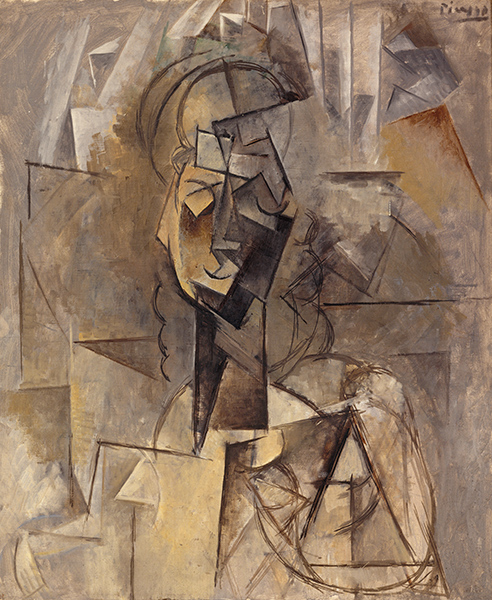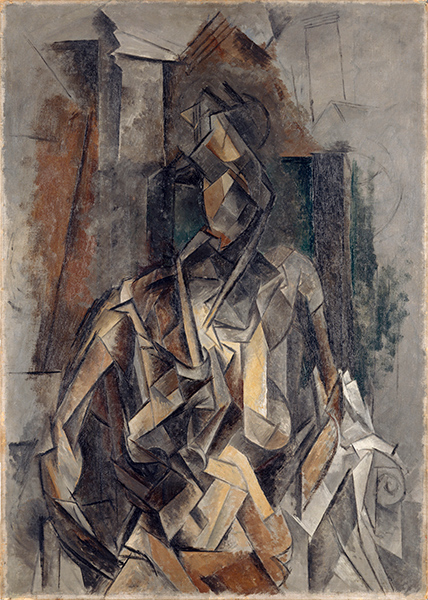Picasso : the alliance of temporality with spatiality
This simultaneous presence of views that nevertheless are mutually exclusive, this involvement of one in the other, and this contraction of an entire process of possible visibility into a single perceptive act, all lead to the originality of the depth of the analytical figure. In his conversations with Zervos, Picasso declares that a piece is not put together by adding heterogeneous elements onto one same, single plane; it does not change by passing through different planes.[1] Therefore, the analytical image is what Bergson calls “the representation of a multiplicity in the form of reciprocal penetration,” entirely different from numerical multiplicity. The analytical image is the representation of a heterogeneous, qualitative, creative duration. As Picasso tells Zervos, a piece does not essentially change, since the artist's initial vision remains almost intact. This vision attests to the point from which the artist departed or to which he kept on returning.[2] To understand an image of this nature requires a huge effort from the viewer; it calls for breaking many previous frameworks, something like a new method of cognition.
The lack of distinction between time and space in this coexistence that binds them to each other means that the two views belong to the same flow of time.
In his Portrait of Gertrude Stein, produced before his analytical period, Picasso had even sought to capture the durable essence of his model. The writer claims that “for me it is I, and it is the only reproduction of me which is always I for me.”[3] In fact, in the present perception of his model, Picasso includes other pictorial captures of the same model performed at different times in the past.
[1] In this respect, see Henri Bergson's considerations in Matière et mémoire: Essai sur la relation du Corps et de l'Esprit (Matter and Memory), Félix Alcan, Paris 1896, pp. 114-16, in André Robinet, Œuvres, Édition du centenaire, Presses Universitaires de France, Paris 1959, pp. 249-51 and “L’effort intellectuel,”, in L’énergie spirituelle. Essais et conférences. Textes et conférences publiés entre 1901 et 1913, Félix Alcan, Paris 1919, pp. 166-67, in André Robinet, Œuvres complètes, Presses Universitaire Française, Paris 1959, pp. 940-941. See also Gilles Deleuze, “Du souvenir aux rêves. Troisième commentaire de Bergson,” in L’Image Temps, Cinéma 2, Paris 1985, chapter 3, p. 62.
[2] As Bergson said to Höffding, “The representation of a multiplicity of 'reciprocal penetration', quite different from numerical multiplicity–the representation of a heterogeneous, qualitative and creative duration–was my point of departure and the point to which I have constantly returned.” In Henri Bergson, Key Writings, Athlone Contemporary European Thinkers, Continuum, New York, 2002, p. 367.
[3] Gertrude Stein, Autobiography of Alice B. Toklas, op. cit., reprinted in Writings 1902-1932, The Library of America, New York, 1998, p. 713.






 Summary
Summary